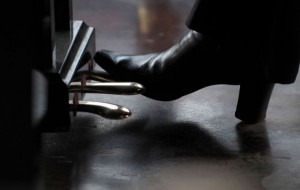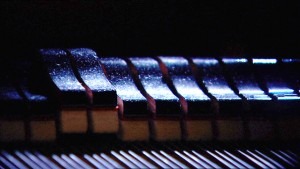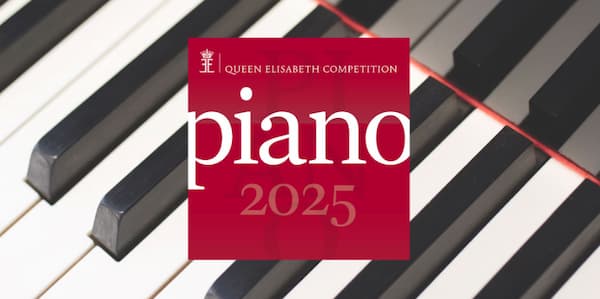 “The more I play, the more I am convinced the pedal is the soul of the pianoforte!”
“The more I play, the more I am convinced the pedal is the soul of the pianoforte!”
Arthur Rubinstein
“….abusing the pedal is only a means of covering up a lack of technique, and that making a lot of noise is a way to drown the music you’re slaughtering!”
Claude Debussy
Pedalling is an aspect of piano technique which is frequently misunderstood and abused. Ask a junior student what the right hand pedal is for and they will invariably reply “to make the piano louder”. The right hand pedal is often wrongly called “the loud pedal”, or is regarded as an “on-off switch”, which shows a complete lack of understanding of the purpose and uses of the “sustain” or “damper” pedal. Pedalling is hard to do well, and I regularly come across instances of sloppy, lazy or misjudged pedalling when I am reviewing at professional concerts.
The sustain pedal has two principal purposes:
1. Allowing the sound to continue even after we release the keys;
2. Changing the timbre of the sound, making it deeper, warmer, more intense, more ‘alive’.
In order to pedal well, it is important to understand what is happening, mechanically, inside the piano, and to engage the ears so that they are alert to all the subtle sounds and variations the pedal can produce. When the pedal is depressed, all the dampers are lifted off the strings so that they can continue to vibrate and sound after a note on the keyboard has been released. The effect of the vibrations is to create a fuller, warmer and more intense sound. This bloom of sound is the result of ‘sympathetic vibrations’, and will mostly be pitches related to the principal note. Since the resonance of the entire instrument is called into play when the dampers are lifted off the strings, the chief effect of the damper pedal is a change in the sound quality of the piano. And this, I think, is the key point to remember – that the damper pedal is about quality of sound, rather than volume of sound.
The point when the pedal is depressed can have a particular effect on the sound of the piano. For example, when the pedal is depressed before the note is struck, all strings are available to resonate, and the sound will have a richness from the beginning. While it is held down, the pedal accumulates sound with each additional note struck. This property can be used to create or enhance a crescendo, particularly in a context of more rapid notes where little pedal is being used. Conversely, by lifting the pedal slowly, there is a gradual decrease in the sound, which creates a diminuendo.

Piano dampers and strings (photo: James Eppy)
There are also degrees of pedal, such as half, quarter or even eighth pedal. This technique of pedalling is particularly useful in Mozart, or during runs and passagework, where it gives substance to the tone without blurring the sounds. For example, in Schubert’s E flat Impromptu from the D899 set, I use one-eighth pedal throughout the rapid triplet runs to provide depth without losing clarity: we want to hear every single note, but we don’t want the music to sound too dry.
Every piano is different and so it is important to experiment – and listen carefully: special colours and immediacy of effect can be achieved by synchronising pedal changes with finger attack, while pedalling before playing can soften the opening of a phrase. Pedal use is also determined by the size and location of the instrument, and experienced pianists will use the pedal instinctively. I often get ticked off by cheeky students for pedalling music which has no pedal markings.
Legato pedal
Legato pedalling, in its simplest form, is the act of joining two otherwise unconnected notes or chords together. Logically this can only happen when the sound of the first note/chord stops and the sound of the second note/chord begins at the same time. To achieve this, the pedal must come up exactly at the point at which the next chord sounds. Where it then goes down is a matter of judgement to do with the type of musical context or the effect desired, speed of the passage etc.
Pedal markings
Ped and * marks are often placed inaccurately, which can make interpretation of the composer’s intentions regarding pedalling confusing. For example, the Ped…….* pedal markings in Chopin are often misleading, and should not be interpreted literally: it is more likely that Chopin intended continuous use of the sustain pedal, and that this type of pedal marking would be more accurate: __/\_/\__ (etc.).
It is said that Chopin “used the pedals with marvellous discretion,” (Auguste Marmontel, Debussy’s teacher and a former student of Chopin), and Chopin himself declared that “The correct employment of the pedal remains a study for life.”
Direct, finger and “dirty” pedalling
Direct pedalling is where the pedal goes down exactly as the hands do. The style of the music will influence how the pedal is used: for example, in classical repertoire, a direct pedal, corresponding with the hands, can often be applied to two-note slurs, sfzorzandi, and cadential chords without distorting articulation and phrasing. “Finger pedalling” does not in fact use the pedal at all. Instead, the fingers are deliberately held down to create the effect of the sustain pedal, while the pedal is used to enhance the melody rather than the harmony of the music. This works particularly well with Alberti bass figures (for example, in Mozart), as it prevents the harmony from sounding too dry.
“Dirty” pedalling requires acute listening skills and is appropriate when a more misty sound and colour are desired, or when the texture needs to be thinned out gradually. I have found this technique particularly useful in romantic repertoire when the composer designates a smorzando (“dying away”) with a diminuendo.
Debussy and the sustain pedal
Pedalling was – and is! – very important in the playing of Debussy’s piano music, though Debussy almost never marked pedal directions on the score. Where he does, it should be observed carefully. Too many pianists, professional and amateur, believe that the pedal in Debussy is used to create the famous “impressionistic blur” so often associated with his music. In fact, “he wanted the pedal used in long harmonic strokes, without breaks or confusion. Occasionally he allowed the pedal to encroach a tiny fraction from one harmony into the next………….. In any case, the blur should be used only for special effects, and with utmost discretion.” [Nichols]
Debussy’s works often imply the use of pedal, because he writes bass notes that cannot be sustained without the help of the pedal. At the same time there are often chord changes that require the pedal to be lifted in order to avoid blurring. Techniques such as half-pedal and “dirty” pedal can be used to create satisfying effects in his piano music. And of course it is crucial to practise without the use of the pedal in order to hear exactly what is happening in the music.
For more of the best in classical music, sign up to our E-Newsletter
Richter plays ‘Pagodes’ from Estampes/Claude Debussy
Levels of pedaling – video masterclass with Graham Fitch





Awesome info about the technique of piano pedaling, this will help improve in my piano playing talent and skills. Thank you so much
No it won’t, If you’re talented and skilled, the use of the pedal will come naturally to you.